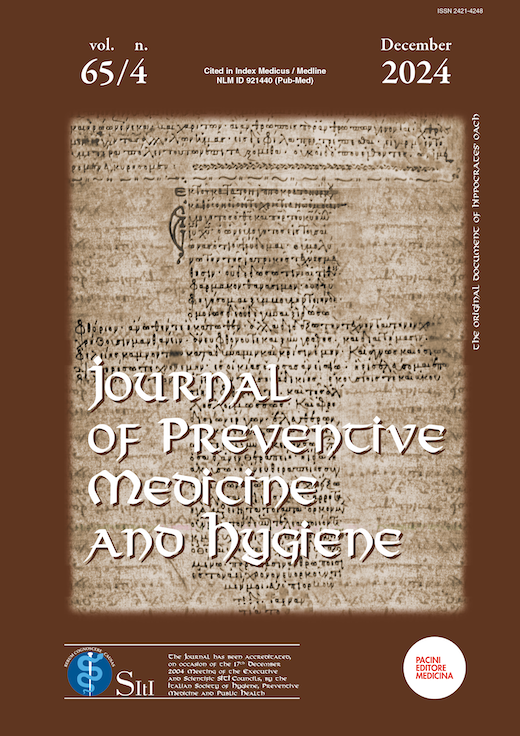Abstract
Abstract
Introduction: Iodine is necessary for the synthesis of thyroid hormones which rely on sufficient levels of iodine. Iodine deficiency (ID) gives rise to various diseases. This is the first study presenting the epidemiology of ID in the Iranian population from 1992 to 2019.
Methods: This study was performed based on the analysis of global burden of disease (GBD) study data. Epidemiological indices including prevalence, incidence, and age-standardized disability-adjusted life years (DALYs) were compared in all provinces located in Iran between 1992 and 2019.
Results: The studies' collective conclusions showed that Iran's age-standardized DALYs rate (ASDR) for iodine deficiency dropped from 14.76 to 5.92. Additionally, the ASDR for Iodine Deficiency is clearly trending lower for all provinces. The ASDR for iodine deficiency peaked in 1990 in middle-aged people of both sexes. But later in the year, the pattern changed, with males and older age groups in particular reporting a larger ASDR of iodine deficiency.
Conclusion: The findings of this study show that the burden of iodine deficiency disorder has decreased in different provinces, all age and, males, but some provinces and groups still need more regulations to reduce the burden of iodine deficiency.
Keywords: Epidemiology, Iodine, Iodine deficiency, micronutrient deficiency, age-standardized disability-adjusted life years, Iran
Statements and Declarations
Funding: This research received no specific grant from any funding agency in the public, commercial, or not-for-profit sectors.
Competing Interests: The author declares no financial or ethical conflicts of interest for any of the studies described in this manuscript.
References
Kalarani IB, Veerabathiran R. Impact of iodine intake on the pathogenesis of autoimmune thyroid disease in children and adults. Ann Pediatr Endocrinol Metab. 2022;27(4):256-64.
Rousset B, Dupuy C, Miot F, Dumont J. Chapter 2 Thyroid Hormone Synthesis And Secretion: MDText.com, Inc., South Dartmouth (MA); 2000 2000.
Hatch-McChesney A, Lieberman HR. Iodine and Iodine Deficiency: A Comprehensive Review of a Re-Emerging Issue. Nutrients. 2022;14(17).
Delange F. The disorders induced by iodine deficiency. Thyroid. 1994;4(1):107-28.
Delshad H, Amouzegar A, Mirmiran P, Mehran L, Azizi F. Eighteen years of continuously sustained elimination of iodine deficiency in the Islamic Republic of Iran: the vitality of periodic monitoring. Thyroid. 2012;22(4):415-21.
Mina A, Favaloro EJ, Koutts J. Iodine deficiency: current aspects and future prospects. Laboratory Medicine. 2011;42(12):744-6.
Downer JV, Hemken RW, Fox JD, Bull LS. Effect of dietary iodine on tissue iodine content in the bovine. J Anim Sci. 1981;52(2):413-7.
Global Burden of Disease. https://www.healthdata.org/research-analysis/gbd 2024 [
Wei R, Wang Z, Zhang X, Wang X, Xu Y, Li Q. Burden and trends of iodine deficiency in Asia from 1990 to 2019. Public Health. 2023;222:75-84.
Global burden of 87 risk factors in 204 countries and territories, 1990-2019: a systematic analysis for the Global Burden of Disease Study 2019. Lancet. 2020;396(10258):1223-49.
Global burden of 369 diseases and injuries in 204 countries and territories, 1990-2019: a systematic analysis for the Global Burden of Disease Study 2019. Lancet. 2020;396(10258):1204-22.
Mathers CD, Murray CJ, Lopez AD. Epidemiological evidence: improving validity through consistency analysis. Bull World Health Organ. 2002;80(8):611.
Yoon SJ, Kim YE, Kim EJ. Why They Are Different: Based on the Burden of Disease Research of WHO and Institute for Health Metrics and Evaluation. Biomed Res Int. 2018;2018:7236194.
GHDx Institute. https://vizhub.
healthdata.org/gbd-results/. 2024 [
Zimmermann MB. The remarkable impact of iodisation programmes on global public health. Proceedings of the Nutrition Society. 2023;82(2):113-9.
Gorstein JL, Bagriansky J, Pearce EN, Kupka R, Zimmermann MB. Estimating the Health and Economic Benefits of Universal Salt Iodization Programs to Correct Iodine Deficiency Disorders. Thyroid. 2020;30(12):1802-9.
Hossein D, Ladan M, Fereidoun A. Appropriate Iodine Nutrition in Iran: 20 Years of Success. Acta Medica Iranica. 1970;48(6).
Delshad H, Azizi F. Review of Iodine Nutrition in Iranian Population in the Past Quarter of Century. Int J Endocrinol Metab. 2017;15(4):e57758.
Eastman CJ, Zimmermann MB. The Iodine Deficiency Disorders: MDText.com, Inc., South Dartmouth (MA); 2000 2000.
Mirahmad M, Mansour A, Moodi M, Safkhani E, Haghpanah V, Asili P, et al. Prevalence of thyroid dysfunction among Iranian older adults: a cross-sectional study. Sci Rep. 2023;13(1):21651.
Sepahvand R, Hatamikia M, Hassanzadazar H, Moridi S, Bahari K, Sepahvand H, et al. Iodine concentration in iodized salts marketed in Lorestan Province, West of Iran. Journal of Chemical Health Risks. 2016;6(2):99-103.
Riabi HRA, Riabi HRA, Aalami A, Moghadam MM, Mircheraghi SF. Comparing the Quality of Iodine in Edible Salt in Iranian Households Living in the Southern Province of Khorasan-e-Razavi Using WHO Standards (Years 2010–2015). Journal of Food Quality. 2017;2017:1-6.
Doggui R, Al-Jawaldeh H, Al-Jawaldeh A. Trend of Iodine Status in the Eastern Mediterranean Region and Impact of the Universal Salt Iodization Programs: a Narrative Review. Biol Trace Elem Res. 2020;198(2):390-402.
Ayturk S, Gursoy A, Kut A, Anil C, Nar A, Tutuncu NB. Metabolic syndrome and its components are associated with increased thyroid volume and nodule prevalence in a mild-to-moderate iodine-deficient area. Eur J Endocrinol. 2009;161(4):599-605.
Kirkman MS, Briscoe VJ, Clark N, Florez H, Haas LB, Halter JB, et al. Diabetes in Older Adults. Diabetes Care. 2012;35(12):2650-64.
Dunn JT, Delange F. Damaged Reproduction: The Most Important Consequence of Iodine Deficiency. The Journal of Clinical Endocrinology & Metabolism. 2001;86(6):2360-3.


